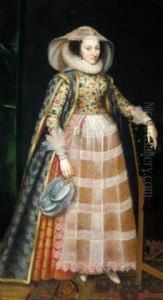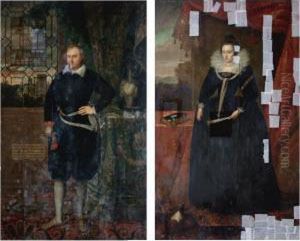Robert Ii Peake Paintings
Robert Peake the Elder (1565 - 1667) was an English painter active during a transformative period in English history, serving most notably under the reign of King James I as a portrait artist. Born into a period that straddled the late Renaissance and the early beginnings of the Baroque era, Peake's work provides a glimpse into the evolving tastes and styles of early 17th-century England, as well as the social and political changes of the time. His life and career spanned the latter years of Elizabeth I's reign through to the early Stuart period, a time marked by significant shifts in art, politics, and society.
Peake's role was not limited to that of an artist; he was also a significant figure within the Office of the Revels, an institution responsible for the organization of court entertainments, which included plays, masques, and other performances. This position allowed him a unique insight into the tastes and preferences of the court, which consequently influenced his artistic output. As a portraitist, he specialized in depicting the nobility and gentry, capturing the opulence and formality of the Jacobean court with a particular focus on costume and adornment.
His most notable contribution to art history, perhaps, was as the master of William Larkin and as the father of Sir Robert Peake, who continued his legacy in the arts. Through his apprentices, Peake played a role in the development of English portraiture, influencing the direction it would take in the 17th century. His works are characterized by their rich detail, particularly in the rendering of textiles and clothing, a reflection of the sartorial splendor valued by his patrons.
Despite his contributions and the patronage he enjoyed, Peake's work has often been overshadowed by that of his contemporaries and successors, such as Anthony van Dyck, who would come to define the era's visual aesthetic more profoundly. Nevertheless, Peake's portraits remain valuable for their historical and cultural insights, offering a window into the world of early Stuart England, its figures, fashions, and the intricate dynamics of its court life.
Robert Peake's death in 1667 marked the end of a long career that had navigated the complexities of artistic and courtly life across one of the most tumultuous periods in English history. His legacy, preserved in the portraits that survive him, provides an enduring record of an era that laid the foundations for modern Britain.

